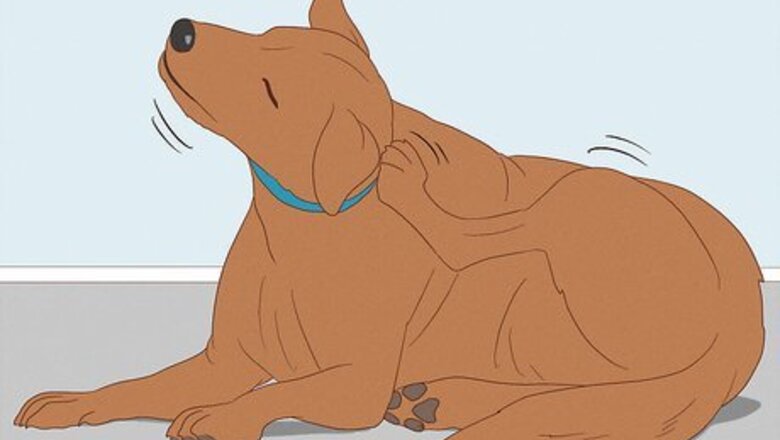
views
- Look out for itching, hair loss, and swollen feet on your pup, as these are classic symptoms of mange.
- Search for signs of mange on yourself and other members of your household as well—typically, they present as red bumps.
- If your dog does have mange, take them to the vet. Then, wash your pet's items (like their leash, collar, and bedding) with bleach or borax.
Recognizing Symptoms of Mange

Intense itching Sarcoptic mange usually causes frantic itching. The dog will usually scratch or chew at their skin relentlessly to relieve the itch. Often, this excessive scratching and chewing can lead to a secondary bacterial infection. The itchiness can distract the dog from eating, drinking, or sleeping. EXPERT TIP Pippa Elliott, MRCVS Pippa Elliott, MRCVS Veterinarian Dr. Elliott, BVMS, MRCVS is a veterinarian with over 30 years of experience in veterinary surgery and companion animal practice. She graduated from the University of Glasgow in 1987 with a degree in veterinary medicine and surgery. She has worked at the same animal clinic in her hometown for over 20 years. Pippa Elliott, MRCVS Pippa Elliott, MRCVS Veterinarian Did You Know? Mange mites are too small to see with the naked eye. If you can see an insect on the dog, then it's not a type of mite and isn't mange. This will require a different treatment. Severe cases of mange that result in infections from bacteria or yeast can cause a white, crusty surface to form on the dog's irritated skin. Dogs suffering from bacterial infections may also often suffer weight loss, run a fever, and/or have enlarged lymph nodes. The first sign you’ll notice in the early stages of mange is ear itching. Your dog will spend an atypical amount of time trying to scratch their ears.
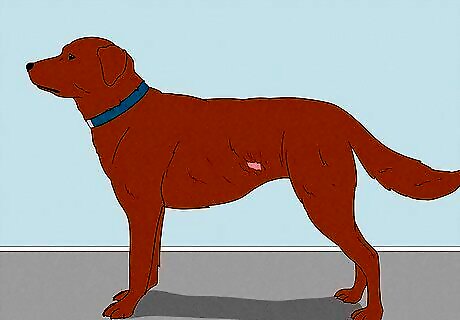
Hair loss Localized demodectic mange, which is the least serious version of mange, usually results in a few bald patches where there’s missing hair. Usually, this small patch will not appear inflamed or irritated and will not cause serious itching. Sarcoptic mange will cause hair loss all over as the dog itches excessively. With demodectic mange, the hair will typically fall out on its own. Dogs with sarcoptic mange will scratch so hard their fur gets pulled out in clumps.
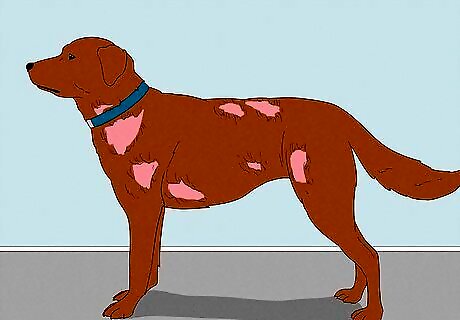
Spreading bald spots If a case of localized demodectic mange does not go away on its own, it may eventually spread to the rest of the dog's body, resulting in generalized mange. The dog subsequently develops numerous bald spots. With sarcoptic mange, the dog’s bald spots will continue to spread as they scratch and itch. The skin surrounding the bald spots may become red, scaly, and/or crusty. This irritation will cause the dog to scratch at their skin, which can lead to additional infections. This is why mange needs to be treated, it keeps causing additional problems if it’s left untreated.
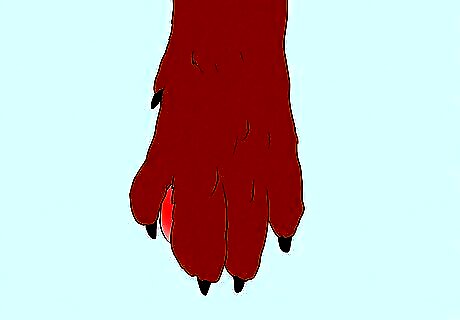
Swollen feet Inspect your dog's feet to see if they're swollen or irritated. Some cases of demodectic mange cause a condition called demodectic pododermatitis. This occurs when the mites that cause mange become deeply embedded in the dog's feet, where they are very difficult to remove. This condition most often presents itself in the form of swollen, irritated feet. This swelling will usually be worse around the nailbeds, and it’ll often be accompanied by a secondary infection. Dogs with sarcoptic mange may also develop swollen paws from the excessive scratching.

Poor grooming and self-care Mange causes itching sensations and the longer the condition goes untreated, the more annoying and painful these sensations become. Eventually, a dog with mange will focus almost exclusively on soothing their itchiness, which can cause the dog to neglect normal activities like eating, drinking, or sleeping. This is why dogs with mange often lose weight. They forget to eat when they’re hungry.
Testing for Sarcoptic Mange
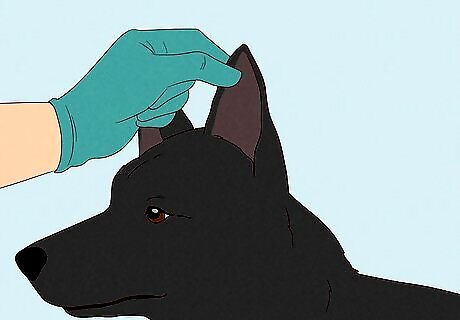
Perform the pinnal-pedal scratch test to check for mange. The pinnal-pedal test is a classic reflex check used to determine whether a dog may have mange or not. To do it, grab one of your dog's ears. Hold the loose, floppy part of the ear between your thumb and index finger. Wear gloves while handling a dog with mange and wash your hands thoroughly when you’re done. The mites that cause mange in dogs can irritate humans, but the irritation won’t be permanent (the mites can’t thrive on people), so don’t worry too much.
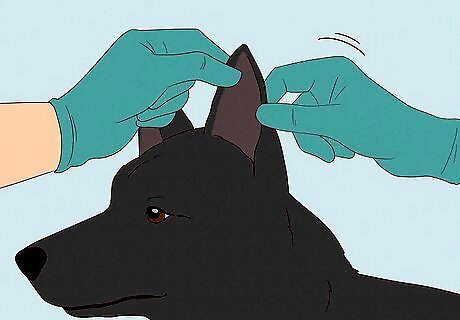
Rub their ear gently between your fingers. Use your thumb and index finger to rub the dog's ear from both sides. Use slow, steady movements and don't squeeze too tightly. While you do this, keep your eyes on the dog's hind legs.
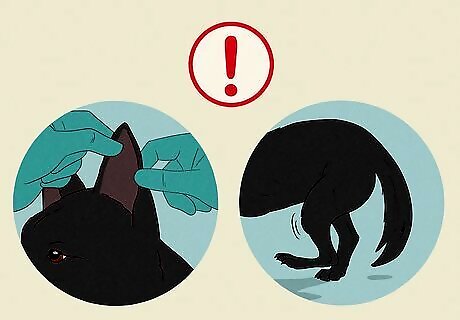
Presume the dog has mange if they try to scratch. When you rub your dog’s ears, what do they do? If your dog has sarcoptic mange, they’ll move their back leg repeatedly like they’re trying to scratch an itch. If they don’t try to scratch, they probably don’t have mange. Wash your hands with soap and water when you’re done. The mites that cause mange always love to gnaw on a dog’s ear. When you rub the dog's ear, it feels similar to the irritating itching sensation caused by the mites. So, if the mites are present, the dog will instinctually try to scratch.
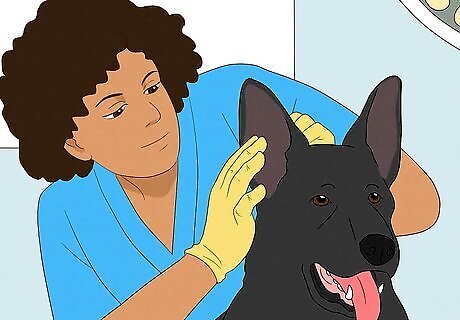
See a vet for a formal diagnosis. The pinnal-pedal reflex test does not give a definitive diagnosis of sarcoptic mange. You still need a vet to confirm it and get the treatment your dog needs.
Different Types of Mange
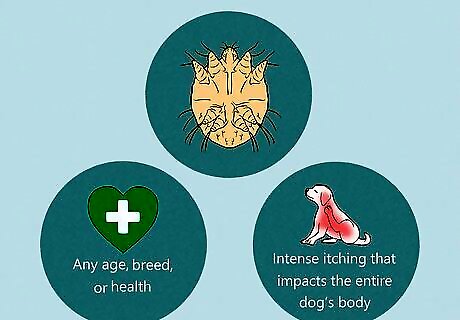
Sarcoptic mange Sarcoptic mange is what most people think of when they hear the word “mange.” It’s caused by a few different species of mite, and it can affect any dog regardless of their age, breed, or health. Sarcoptic mange typically causes intense itching that impacts the entire dog’s body (although it starts at the ears most of the time). The different forms of mange are caused by different species of mite. These mites are related to the same species that cause scabies in people. Mange on its own isn’t deadly, but it will almost always lead to potentially lethal conditions if it’s left untreated.
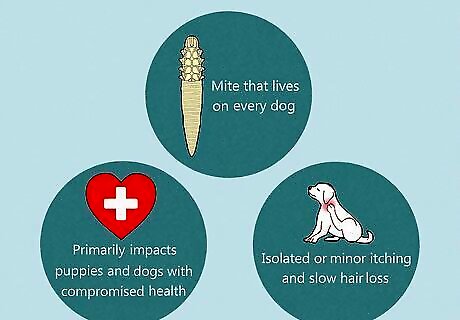
Demodectic mange Demodectic mange primarily impacts puppies and dogs with compromised health. It’s caused by a mite that lives on every dog, but only causes mange in dogs with immune systems that react strongly to the bugs. It’ll normally cause isolated or minor itching and slow hair loss. Demodectic mange may also be called Demodex, which is the genus of mite that causes the mange.
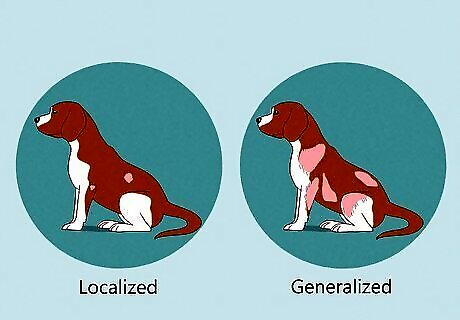
Localized versus generalized mange Localized demodectic mange is characterized by hair loss in one or two spots. If unresolved (possibly because of suppressed immunity, allergies, or endocrine issues), the condition may spread. This can lead to a whole body reaction, which is generalized mange. Localized demodectic mange is most common in puppies. In about 90% of cases, localized demodectic mange in puppies disappears on its own without treatment in a month or two.
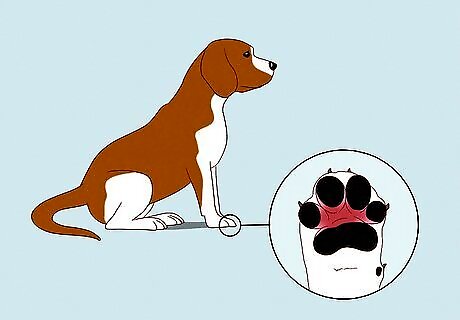
Demodectic pododermatitis There is technically a third type of demodectic mange. If a dog has the classic symptoms of demodectic mange but they’re isolated to the dog’s feet, they have pododermatitis. Treatment of pododermatitis can be time consuming and often involves administering antibiotics and frequently dipping the dog's feet in a medication called Mitaban. This is a pretty rare presentation of mange. Most of the time, a dog with itchy feet has allergies.
Treating and Preventing Mange
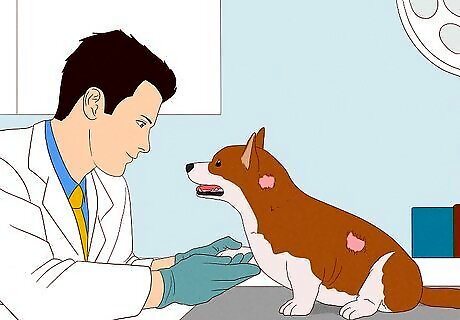
See a vet to rule out other potential explanations. The symptoms of mange are also symptoms of other health issues, like allergies, hyperadrenocorticism (Cushing's disease), diabetes, hyperthyroidism, or parasites. See a vet in order to get a proper diagnosis and rule out these other potential issues.

Follow your veterinarian’s care instructions. If you think your dog has any sort of mange, consult your veterinarian and follow their instructions. Only a trained, experienced vet can run the proper diagnostic tests to determine the type and severity of the mange. Depending on the diagnosis, the vet will then prescribe the proper medication to treat the mange. Most of the time, treatment involves medicated shampoo baths once a week and a topical or oral medication that kills the mites. It’s a very easy disease to treat. You may need to clip your dog’s hair if it’s especially long to make the treatment more effective. Because mange is almost always easiest to treat before it becomes severe, seeing your vet as quickly as possible is important. Cases of sarcoptic mange require a veterinarian more urgently than demodectic mange.

Clean or replace the dog's bedding, collar, and other gear. After you’ve begun treatment, replace or clean any objects that have recently come into contact with the dog's hair or skin. This includes your dog’s bedding, collar, leash, harness, doghouse, and any brushes or cleaning products. The need for cleaning is especially urgent if you have other pets who don't have mange yet. For fabric objects, launder them with bleach or borax and dry them at the highest possible setting. For hard objects and surfaces, use a disinfectant spray or white vinegar.

Avoid breeding dogs with demodectic mange. Dogs who get bad cases of demodectic mange usually have a weak immune system. This means they’re poor candidates for breeding, since they’ll likely pass on all of their bad genes to their offspring.
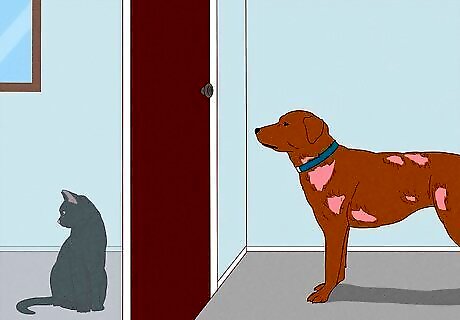
Keep other animals away from a dog with sarcoptic mange. Because sarcoptic mange is highly contagious, quarantine is essential to make sure that other pets and animals don't catch the disease. If your dog has sarcoptic mange, separate them from other animals until the mites are 100% dealt with. Note that no form of demodectic mange is thought to be contagious to other animals or humans. You can totally quarantine the dog if you aren’t sure what kind of mange they have, though.

Keep your dog away from wild animals or unknown dogs. Sarcoptic mange is highly contagious and usually passed from one infected dog to another. It can be passed from a mother to her puppies, or from a squirrel or fox to a dog. This is why mange is common in overcrowded living areas where dogs are poorly maintained, such as puppy mills, boarding kennels, and shelters. A dog could catch mange from an object that has recently been used on an infected animal, such as a blanket or towel.



















Comments
0 comment